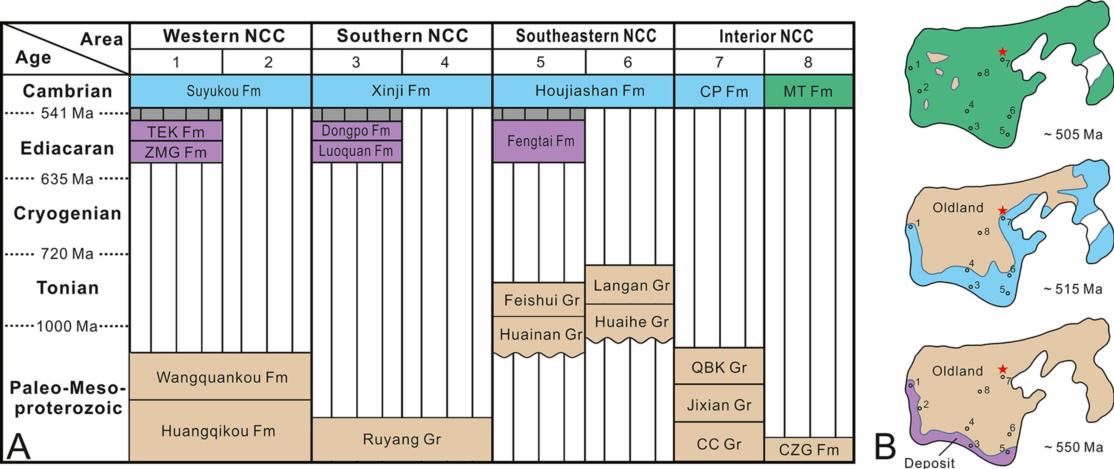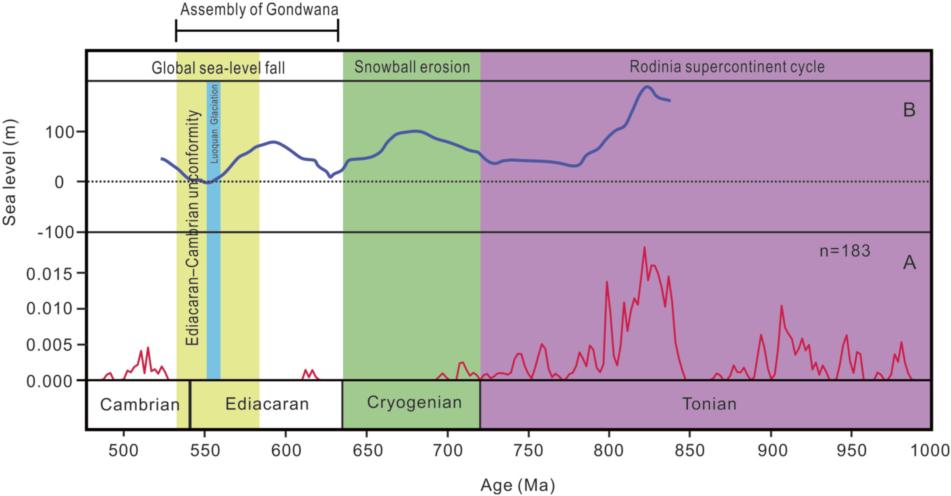In many blocks on the Earth, the boundary between the Phanerozoic and Precambrian is consistently characterized by a huge sedimentary gap-the Great Unconformity.
Recently, researchers from the Nanjing Institute of Geology and Palaeontology of the Chinese Academy of Sciences (NIGPAS) have conducted a synthetic geochronological study about the late Ediacaran to early Cambrian strata on the southern North China craton, which provides a new perspective on the origin of the Ediacaran-Cambrian unconformity.
The study was published in Earth and Planetary Science Letters on Oct. 16.
This long-drawn exhumation has been argued to trigger the initiation of modern plate tectonics, the oxygenation of the ocean and atmosphere, and the Cambrian explosion. According to thermochronologic and stratigraphic studies, the Great Unconformity has been confirmed to consist of one denudation before the Cryogenian and two exhumations during the "Snowball Earth" and the Ediacaran-Cambrian transitional period.
Multiple geological events have been proposed to be associated with the Ediacaran-Cambrian unconformity, including the final break-up of the Rodinia supercontinent, plume activity associated with the continental-scale rifting, tectonic response to the assembly of Gondwana, as well as other regional plate tectonics. However, it is still unclear how different tectonics could produce the widely comparable Ediacaran-Cambrian unconformity in different blocks.
The Great Unconformity occurs widely in the North China craton, recent studies suggested it is composed of a prolonged sedimentary break from late Paleoproterozoic/early Neoproterozoic to late Ediacaran and a short one between late Ediacaran and early Cambrian, which resembles the development pattern of the typical Great Unconformity in North America and Qaidam. In this regard, the North China craton would provide us with an opportunity to understand the mechanism of the widespread exhumation that occurred from late Ediacaran to early Cambrian.
Detrital zircon ages for the late Ediacaran-early Cambrian strata in the southern, western, and southeastern margins of North China craton show great similarities, with predominant age clusters peaking at ~1,800 Ma and ~2,500 Ma. The geochronological study reveals an apparent absence of synsedimentary zircons in the latest Ediacaran to earliest Cambrian strata, suggesting a significant tectonic quiescence in North China craton.
Similar situation also occurs in blocks outside the Gondwanaland in the late Neoproterozoic, indicating that the contemporaneous erosion represented by the widespread Ediacaran-Cambrian unconformity may have been dominated by a global sea-level fall, rather than regional tectonics.
"However, our result does not preclude the influence of tectonism on the manifestation of the Ediacaran-Cambrian unconformity in other blocks, especially those that make up the Gondwanaland," said SUN Yunpeng, first author of the study. "The late Neoproterozoic global sea-level fall was possibly associated with the assembly of the Gondwanaland."









